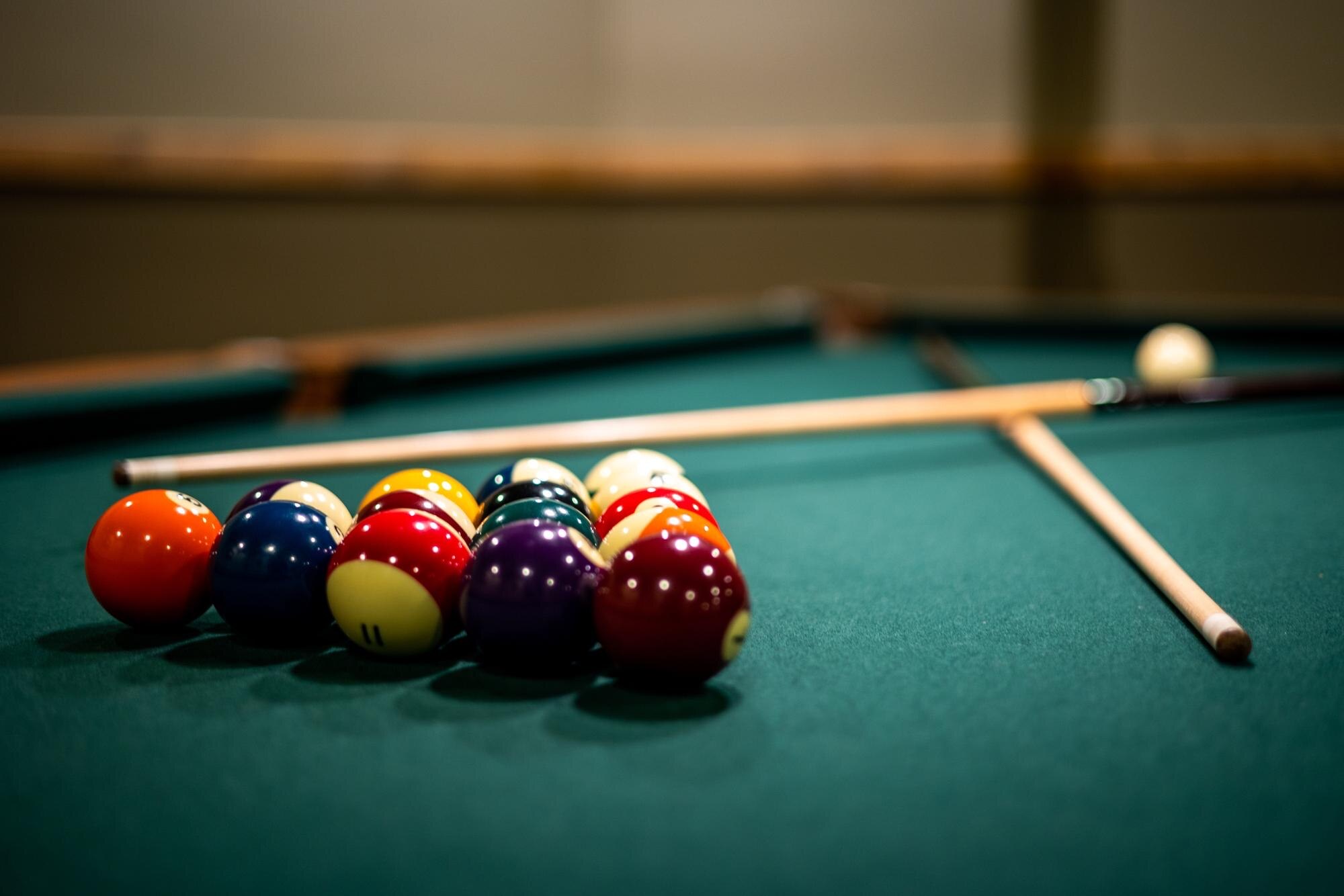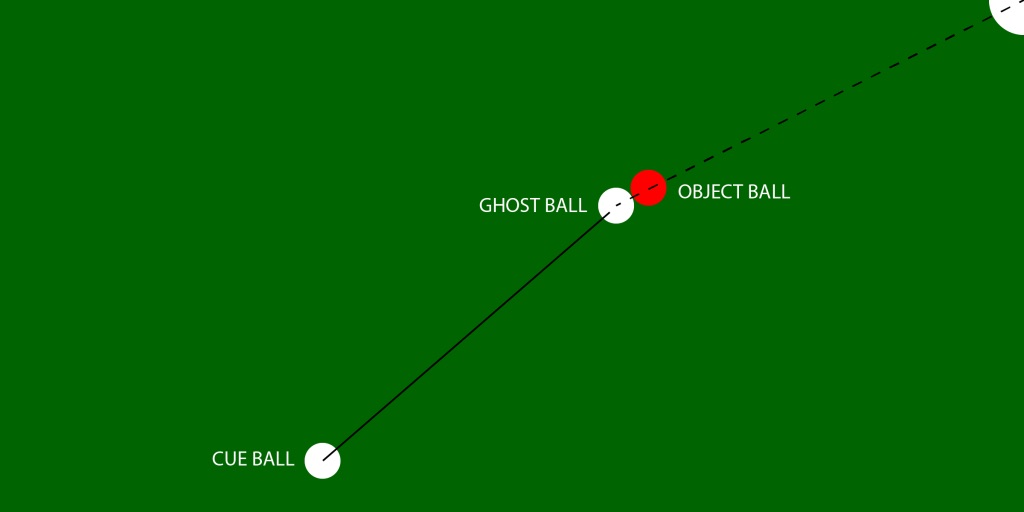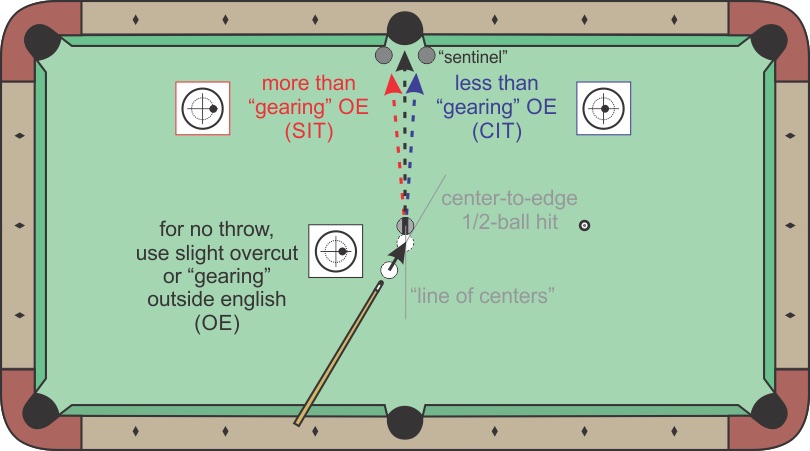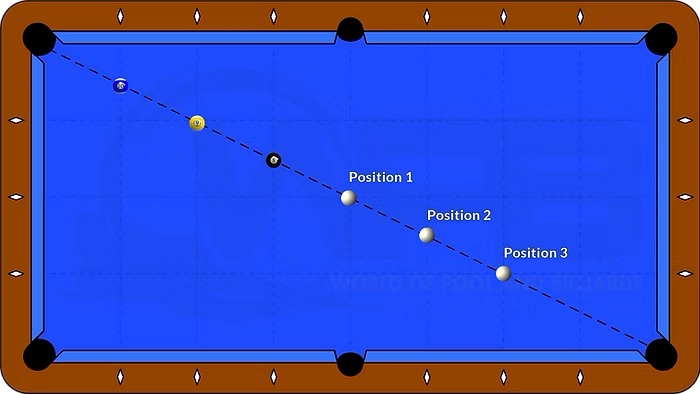How To Hit A Pool Ball: Your Expert Guide
Key Takeaways
- Many beginners think the goal is to make as many balls as quickly as possible. But real winners think two or three shots ahead. You need to look at the entire table, identify any “problem balls” that might be tough later, and solve those early while you still have options.
- Pocketing the object ball is only half the battle. Real control in pool means knowing where your cue ball will end up after the shot. Learn how to hit a pool ball in detail in this article!
- Many players underestimate how much the quality of their cue impacts their game. A professional-grade cue gives you better feedback (the way you feel the shot through your hands), better accuracy (thanks to straightness and balanced weight), and better spin control (with a responsive tip and shaft). Check out Pearson Cues and level up your shots today!

How To Hit A Pool Ball
How To Hit A Pool Ball
1. Ghost Ball Method
When you’re learning how to hit a pool ball, one of the easiest ways to aim better is by using the ghost ball method.
Here’s how it works:
Imagine an invisible (“ghost”) ball sitting right next to the ball you want to make. This ghost ball is perfectly lined up so that if the cue ball were to take its place and roll into the real ball, it would send it straight into the pocket.
To practice it:
- Picture a straight line from the pocket, through the ball you’re aiming at.
- Then imagine placing your cue ball exactly where a second ball (the ghost ball) would sit on that line.
- Now, when you shoot your pool stick, aim to send your cue ball to that ghost spot — and the ball you’re trying to make will roll into the pocket naturally.

Practice the ghost ball method. Source: snooker pot
This method makes a lot of tricky shots easier, even for tougher angles. It’s all about cue ball control and being able to send the cue ball to the right spot with the right amount of force.
When you know how to shoot a pool stick properly and aim with the ghost ball in mind, you can line up shots much more confidently.
Remember, balls are round, not flat! That’s why just “eyeballing” a straight line doesn’t always work. The ghost ball method helps you control the cue ball better by making you think about the true point of contact between the balls.
It’s not a perfect system, but it’s one of the easiest and most reliable ways to quickly learn how to hit a pool ball accurately.
Read more: Beginner-Friendly Pool Table Tricks to Impress Your Friends
2. Cue Ball Control
When mastering how to hit a pool ball, one of the biggest things that separates a beginner from a pro is cue ball control. It’s not just about making the ball you’re aiming at — it’s about knowing exactly where your cue ball will go after the shot.
Good players don’t leave it to chance; they control it on purpose, and that’s how they stay in charge of the game!
- Stop shot
A great place to start is with the stop shot.
To shoot a stop shot, hit the cue ball just a little bit below the center. When done correctly, the cue ball will hit the object ball and come to a dead stop.
This is one of the easiest and most important shots in pool because it keeps you perfectly lined up for your next shot without the cue ball rolling away.
Learn more details below.
- Follow shot
Next, there’s the follow shot, which is kind of the opposite. Instead of hitting below center, hit just a little above the center of the cue ball and push through smoothly.
When done correctly, your cue ball will follow the object ball forward after making contact. This shot is helpful when you want the cue ball to move up the table into a better position.
- Draw shot
Now, if you want to pull the cue ball back toward you after making a shot, you’ll need the draw shot.
For a draw, hit slightly below center (lower than you would for a stop shot) and stroke smoothly. The cue ball will spin backward after it hits the object ball and come back toward you, giving you great positioning when the next ball is behind you.

Draw and drag shots. Source: Dr. Dave Pool Info
Read more: How To Win the 9-Ball Pool In One Shot? 4 Techniques For Best 9-Ball Break
- Left & Right spin
Besides moving the cue ball forward or backward, you can also make it move sideways by using side spin, or what players call “English.”
For left spin, aim to hit the cue ball toward the 9 o’clock side. This will make the cue ball spin to the left, especially after it bounces off a rail. For right spin, aim at 3 o’clock, and the ball will spin to the right.
At first, the effect might not seem super obvious, but as you practice, you’ll see how much this helps you curve the cue ball exactly where you need it.
- Combine spin
The real magic happens when you combine spins.
For example, if you want the cue ball to move into a better angle after hitting a ball, you can add top-right English — hitting slightly above center and to the right. This opens up the cue ball’s path and brings it closer to where you want it for the next shot.
Or, if you need to swing the cue ball around the table to get into position, you can hit with bottom-left English, which makes the ball come off the rails with a wider arc and more momentum.
Once you start practicing these different types of spin and learn how to control the cue ball after every shot, you’ll quickly see the difference in your game.
How to shoot a pool stick isn’t just about making a ball in a pocket; it’s about thinking ahead and putting the cue ball exactly where you want it for the next shot — and the one after that.
3. Throw (Deviation)
Understanding something called “throw” (or deviation) is super important, especially if you want good cue ball control.
Let’s break it down:
If you hit the cue ball with follow (hitting above center) or draw (hitting below center), your shot will stay straight, and your ghost ball aiming system will work perfectly. In those cases, the cue ball simply travels in a straight line, and everything behaves the way you expect.
But once you start adding side spin, like left spin or right spin, things change a little.

Throw in pool. Source: Dr. Dave Pool Info
When you hit the cue ball with, say, left spin, the cue ball starts spinning sideways as it travels. When it contacts the object ball, that spin transfers over and slightly pushes the object ball off its natural path, almost like a small nudge.
You might not be able to see this tiny movement with your eyes, but it happens. And because of it, even if you aim exactly at the right spot using your ghost ball method, the ball might still miss the pocket. That’s why, when you use a lot of sidespin, you need to adjust your aim a little more to one side to compensate for that throw.
For example, if you put a heavy left spin on a straight shot, the object ball will drift slightly to the right after contact.
If you don’t adjust, you’ll miss even though your aim looks perfect. It’s not that you aimed wrong, it’s that the spin changed the path.
If you’re just starting to learn how to shoot a pool stick and get comfortable with cue ball control, it’s a smart idea to avoid using too much side spin at first.
Stick with basic shots—follow, draw, and a bit of spin. That way, the table will feel more predictable, and you’ll have a much easier time aiming and learning.
Later on, once you get more advanced, you can start experimenting with more side spin and learn how to adjust naturally. But for now, simple is better when it comes to learning how to control the cue ball.
Read more: How to Get Better at Pool: Essential Techniques and Expert Tips
4. Stop Shot
If you want to learn how to hit a pool ball and build real cue ball control, mastering the stop shot is one of the best places to start.
A stop shot means the cue ball hits the object ball without rolling forward or pulling back; it simply stops dead on contact.
To do that, you need to strike the cue ball cleanly with no topspin or backspin. This makes the cue ball follow the natural tangent line after hitting the object ball, which is a predictable and important part of good shot-making.
Practicing the stop shot at different distances and speeds teaches you exactly how your cue ball will behave, which makes controlling the cue ball much easier. Even if the shot is at an angle, knowing how to stop the cue ball right at impact keeps your game solid and predictable.

Stop shot in pool. Source: World of Pool and Billiards
Once you’re good at the stop shot, you can start practicing follow shots (where the cue ball moves forward after impact) and draw shots (where it comes back after hitting the ball).
Slowly add more spin into your drills, changing the zone where you want the cue ball to land. This hands-on practice helps you naturally feel how to control power, spin, and speed, all of which are key to mastering how to shoot a pool stick like a pro.
Quick Tip: You don’t need fancy drills. Just focus on small, simple goals — like landing the cue ball in a certain area — and you’ll improve faster than you think.

Dave Pearson
Dave Pearson, the world's leading pool entertainer, is renowned globally as the ultimate exhibition player.
Boasting 20 world records endorsed by the prestigious Guinness Book of World Records, Dave established a legendary history in the sport industry.
